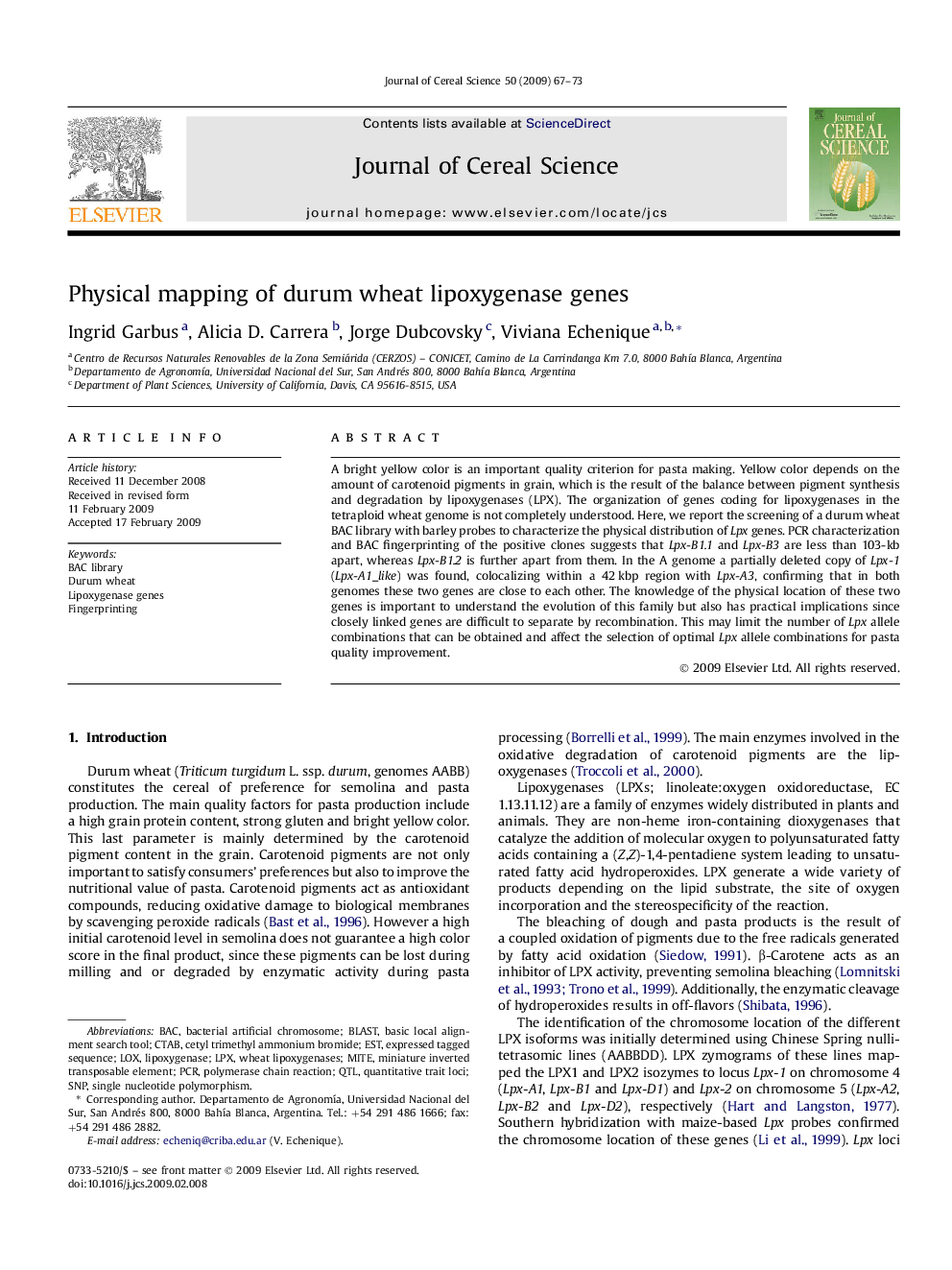| Article ID | Journal | Published Year | Pages | File Type |
|---|---|---|---|---|
| 4516598 | Journal of Cereal Science | 2009 | 7 Pages |
A bright yellow color is an important quality criterion for pasta making. Yellow color depends on the amount of carotenoid pigments in grain, which is the result of the balance between pigment synthesis and degradation by lipoxygenases (LPX). The organization of genes coding for lipoxygenases in the tetraploid wheat genome is not completely understood. Here, we report the screening of a durum wheat BAC library with barley probes to characterize the physical distribution of Lpx genes. PCR characterization and BAC fingerprinting of the positive clones suggests that Lpx-B1.1 and Lpx-B3 are less than 103-kb apart, whereas Lpx-B1.2 is further apart from them. In the A genome a partially deleted copy of Lpx-1 (Lpx-A1_like) was found, colocalizing within a 42 kbp region with Lpx-A3, confirming that in both genomes these two genes are close to each other. The knowledge of the physical location of these two genes is important to understand the evolution of this family but also has practical implications since closely linked genes are difficult to separate by recombination. This may limit the number of Lpx allele combinations that can be obtained and affect the selection of optimal Lpx allele combinations for pasta quality improvement.
